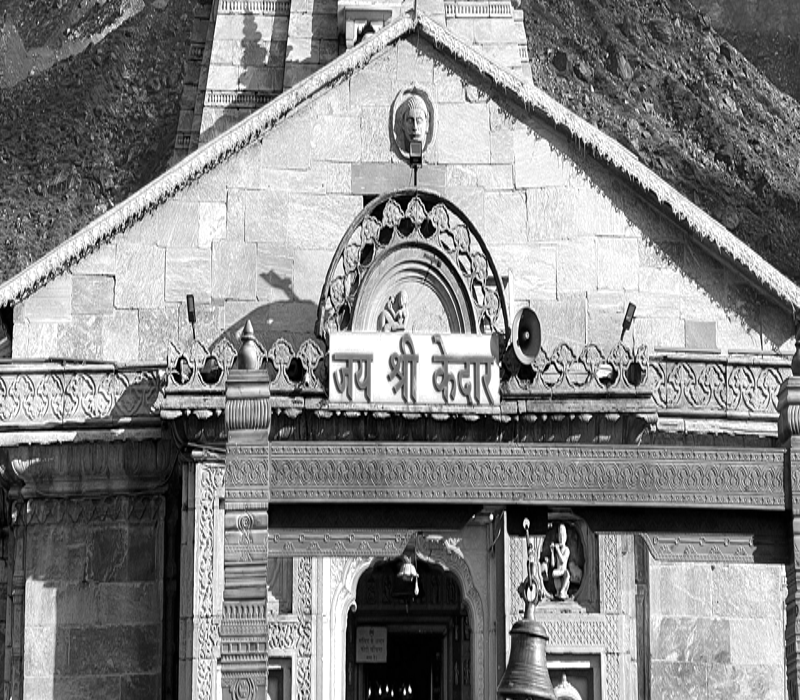- Offices: Dehradun | Dwarka New Delhi
A Divine Sanctuary: Exploring Shri Haru Temple in Bageshwar and Its Enchanting Vicinity - Nestled in the cradle of the majestic Himalayas, the town of Bageshwar in Uttarakhand, India, unveils a tapestry of spirituality, natural beauty, and cultural heritage. Among its treasures, the Shri Haru Temple stands as a testament to devotion and architectural grandeur. This revered temple, accompanied by its neighboring attractions, invites pilgrims and travelers to embark on a journey of spiritual introspection and awe-inspiring exploration.
Shri Haru Temple: A Divine Jewel
The Shri Haru Temple, also known as the Bhileshwar Temple, is a spiritual haven that draws devotees and visitors from near and far. Dedicated to Lord Shiva, the temple stands as a tribute to faith, architecture, and the mystical allure of the Himalayas. The temple's name, "Bhileshwar," is derived from the words "bhilli" (meaning cave) and "eshwar" (referring to Lord Shiva), underscoring the temple's unique location and deity.
The temple's architecture seamlessly melds with the natural contours of the land, creating an aura of timelessness and devotion. The sanctum sanctorum enshrines a Shivalinga, the sacred symbol of Lord Shiva, and its ambiance resonates with the chants of devotees, the aroma of incense, and the palpable energy of spirituality.
Spiritual Significance and Rituals
The Shri Haru Temple stands as a focal point of spirituality, drawing devotees seeking blessings, solace, and a deeper connection with the divine. The temple holds a significant place in the hearts of pilgrims who believe that paying homage to Lord Shiva here grants them liberation from the cycle of birth and death. The temple's historical and mythological associations add to its spiritual allure.
Rituals at the Shri Haru Temple offer a glimpse into the timeless traditions of Hindu worship. The fragrance of flowers, the sound of bells, and the rhythmic recitation of mantras create an atmosphere that transcends the material world and connects with the divine. During festivals like Shivaratri, the temple comes alive with elaborate decorations, devotional hymns, and the fervor of devotees coming together to celebrate their faith.
Exploring the Surroundings
The pilgrimage to Shri Haru Temple is enriched by the plethora of attractions that surround it:
- Bagnath Temple: A short distance from Shri Haru Temple is the renowned Bagnath Temple, dedicated to Lord Shiva. Situated on the confluence of the Gomti and Saryu rivers, this ancient temple is steeped in spiritual significance.
- Lakshmi Ashram: The Lakshmi Ashram offers a serene environment for spiritual reflection and rejuvenation. Founded by Sister Sarla, the ashram is a tribute to simplicity, service, and inner growth.
- Baijnath Temple: A short drive from Shri Haru Temple, the Baijnath Temple is an architectural marvel dedicated to Lord Shiva. The intricate carvings and historical significance add to its allure.
- Rudradhari Falls and Caves: This attraction combines natural beauty with spiritual significance. The falls cascade gracefully amidst lush surroundings, and the caves are believed to have been the meditation site of the revered sage Rishi Rudra.
- Kausani: Not far from Bageshwar, Kausani offers panoramic views of the Himalayan peaks. It's a haven for nature lovers, poets, and those seeking tranquility amidst nature's splendor.
Embracing the Experience
The journey to Shri Haru Temple and its surrounding attractions is an opportunity to embrace the essence of devotion, spirituality, and natural beauty. The temple's sacred ambiance and the panoramic landscapes offer a respite from the complexities of modern life, creating an environment that fosters inner peace, self-reflection, and a profound connection with the divine.
Practical Tips for the Pilgrimage
- Attire: When visiting sacred sites like Shri Haru Temple, dress modestly and respectfully. Cover your shoulders and legs as a mark of reverence.
- Footwear: As per customary practice, remove your footwear before entering temple premises. Designated areas are provided for shoe storage.
- Timing: Check the temple's opening and closing hours before planning your visit. Early morning or late afternoon hours are usually the best times for a serene experience.
- Offerings: It's customary to offer flowers, fruits, and other items as a token of respect and devotion to the deity.
- Photography: While photography is often allowed in outer areas, be mindful and respectful when taking pictures inside the temple.
In Conclusion
The journey to Shri Haru Temple and its neighboring attractions is a spiritual odyssey that transcends the boundaries of time and space. It's a voyage of devotion, an exploration of ancient architecture, and a communion with the sublime beauty of the Himalayas. As you step into the temple's sanctum, bask in the spirituality of the surroundings, and explore the cultural treasures nearby, you'll find that this pilgrimage isn't just about visiting places—it's about connecting with the essence of faith, the sanctity of history, and the profound energy that permeates the heart of the Himalayas.

